In the rapidly evolving world of SEO, staying ahead of the curve is critical.
Traditional SEO focuses on optimizing for keywords and topics directly related to your business.
However, as markets become increasingly saturated, new strategies are needed to stand out and reach a broader audience. That’s where tangential SEO comes in.
Tangential SEO involves creating and optimizing content for topics that are tangentially related to your core business. This allows you to engage with audiences who may not be actively looking for your products or services but who could still find them relevant or useful.
It is a strategy designed to build brand visibility, establish authority, attract a wider audience, and ultimately drive more traffic to your site.
Whether you’re a content marketer seeking to diversify your strategy, a business owner aiming to extend your online reach, or a newcomer to the field eager to learn, this guide is for you.
Not only will I explain what tangential content is at a broader level, but I’ll also show you how we find alternative keywords using untraditional methods.
You’ll have a methodology for finding keywords none of your competitors have even thought about.
Excited?
Let’s begin.
What Is “Tangential Content”?
Quite simply, tangential content is content that is not directly related to your product or service offering.
For example, instead of only focusing on sportswear, Nike might generate content around topics like music playlists for different moods or workout routines, exploring various global music trends.
It could even discuss urban design and its impact on outdoor physical activities. These are topics not directly related to Nike’s products but themes that would likely resonate with its audience.
Let’s give some more examples for context:
- Starbucks: Beyond coffee, Starbucks could create content discussing books and literature, considering that many people enjoy reading while sipping its coffee. The brand could start a book club, share reviews, and host author interviews.
- Apple: Apple might deviate from its technology-centered content to explore topics like interior design, highlighting aesthetic and minimalistic arrangements that complement its devices or discussing how different spaces foster productivity and creativity.
- IKEA: While primarily focused on furniture, IKEA could develop content around topics like urban gardening, offering tips for creating green spaces in small city apartments, or sharing recipes to create using limited kitchen tools.
Why Create Tangential Content?
Creating tangential content can have numerous benefits, particularly when it comes to reaching a wider audience, building brand authority, and improving SEO performance.
As a food lover, I wanted to try and squeeze a food analogy in, so I’m going to do it here. Let’s consider the benefits of creating tangential content as a master chef in the culinary world.
- Broader audience reach: Just like a versatile chef caters to various palates, tangential content allows your brand to cater to a wider audience – which is especially important for weirder or more abstract niches.
- Increased engagement: Changing up the menu keeps diners interested, just like a variety of content can keep your audience engaged. By showing that your brand can whip up more than just the standard fare, you’re demonstrating a deeper understanding of your audience’s diverse tastes.
- Building brand authority: When you create a variety of dishes, you prove your culinary skills beyond your signature dish. Similarly, creating content on a range of topics positions your brand as an authority in your field, enhancing your reputation and influence.
- Creating more emotional content and aligning with customer lifestyle: Tangential content is akin to designing a themed dining experience that aligns with your customer’s lifestyles and preferences. For instance, if you know your customers are environmentally conscious, you might focus on farm-to-table ingredients or share stories of local farmers. This not only provides content that resonates emotionally but also aligns your brand more closely with your customer’s values and lifestyles.
- Link building: Just as a unique fusion dish might get rave reviews and recommendations, tangential content often has a higher potential to be shared, earning you backlinks from various domains. These backlinks boost your site’s authority, much like word-of-mouth boosts a restaurant’s reputation.
- SEO performance: By offering a variety of dishes, you’re catering to more tastes and attracting more diners. Similarly, by covering a range of topics, you’re likely to rank for more keywords, attracting more organic traffic to your website.
While the benefits of publishing tangential content are clear, don’t overlook the value in the research process itself.
The analogy continues like so: consider researching tangential content ideas similar to the time a chef spends experimenting in the kitchen and interacting with their customers.
It’s during this phase that the chef discovers which dishes their customers can’t get enough of, which ones they’re not too fond of, and what cuisine they’re yearning to try next.
In the same way, when you research diverse topics for your tangential content, you’re not only gathering material for your next post – you’re also gaining a broader understanding of your customers’ unmet needs or interests.
This insight is just as valuable, if not more so, as it can guide the development of new products, services, or post-purchase support articles.
So, even before you’ve served up your tangential content to your audience, the research phase itself can help you refine your ‘menu,’ making your brand more attuned to your customers’ tastes and more valuable in their eyes.
Hopefully, the hokey simile made sense, hasn’t made you hungry, and you’re sold on the concept of tangential content.
I’ll now show you how we generate tangential content ideas.
How To Generate Tangential Content Ideas?
To walk through the following process, I’m going to use an example as if I was doing this research for a fictional hair removal company.
Step 1: Establish Buyer Personas
Buyer personas are essentially fictional representations of your ideal customers, often based on real data and market research about your existing customers. They help us understand our customers (and potential customers) better and make it easier for us to “get into their minds.”
These personas can include information such as demographics, behavior patterns, motivations, goals, challenges, values, and fears.
Sometimes your marketing department will already have one of these, but if they don’t, you could ask our new friend, ChatGPT, to produce one.
Step 2: Create A Mind Map
A mind map typically starts with a central idea, placed in the middle of your page. From this central idea, you’ll draw lines that branch out into main topics.
It’s like a tree sprouting branches.
These main branches can further sprout smaller branches, each representing related subtopics or ideas.
In our scenario, we’ll plant the name of the buyer persona as the seed of our mind map. From there, we’ll let branches grow out, each representing key values, aspirations, preferences, and hobbies that we’ve identified for this persona.
Remember, this isn’t the stage for keyword research; there’s no need to think about keyword volume data. This is more about emptying out your mind and exploring potential questions this persona might have.
This process is about trying to see the world through their eyes.
If you find that you’re not the best match for this persona – for example, if the persona is a 28-year-old woman and you’re not a 28-year-old woman (as I am not) – then it could be beneficial to bring in someone who aligns more closely with the persona.
This way, you can ensure you’re covering all bases and not missing any important insights.
In any case, here’s one I started doing for a persona I called “Sarah Thompson.”
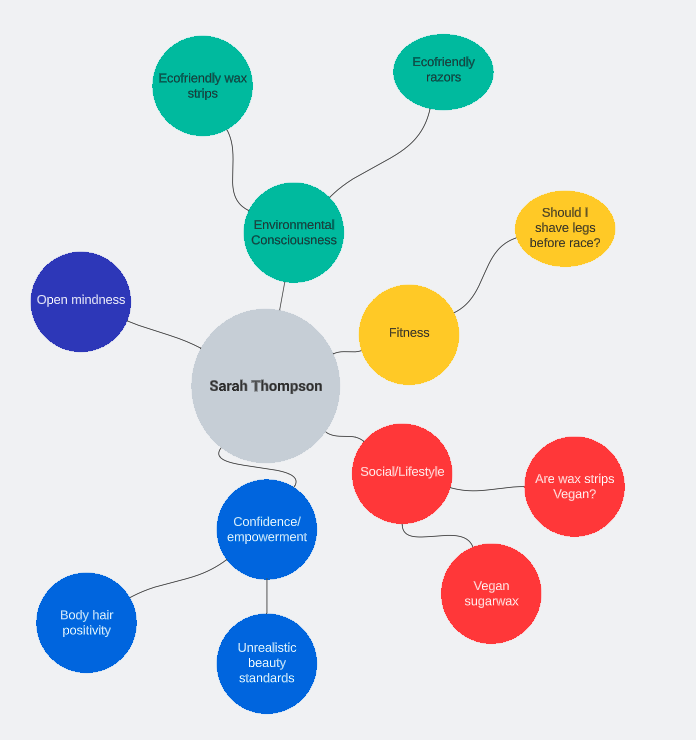

Also, it’s wise to create several mind maps to cater to different segments of your target audience.
For instance, when I analyzed a renowned hair removal company’s website data using Similarweb, I discovered a substantial interest from males in hair removal.
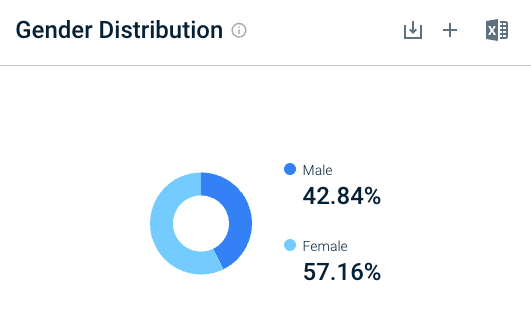

As a bald male, I had to confront my own biases that initially made me overlook a significant demographic. To make the most of this exercise, it’s crucial that you don’t let your personal biases cloud your judgment.
In light of my realization, I did create a mind map for the male audience, following the same steps. However, to avoid repetition, I won’t detail that process again.
Always remember: diversity in perspectives can enrich your content strategy!
Step 3: Find The Data To Support Ideas
This is where the fun begins! I simply take all the questions I’ve brainstormed in my mind map and pop them into Google to see what surfaces.
If you take a look at the screenshot below, you’ll see that my initial search query doesn’t have any search volume (highlighted in the red box).
Despite this, Google still fetches a bunch of relevant results. Interestingly, each of these results does rank for a certain number of keywords, as indicated by the green boxes.
So, even without search volume for the initial query, there’s still relevant content out there capturing people’s interest.
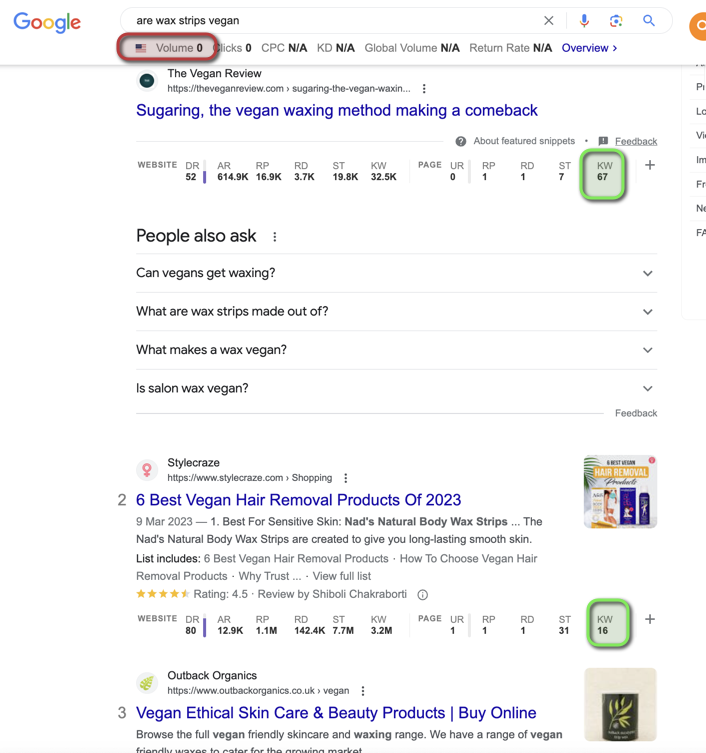 Screenshot for search for [are wax strips vegan], Google, May 2023
Screenshot for search for [are wax strips vegan], Google, May 2023
You’re going to want to gather all these keywords. Honestly, this is where I find the Ahrefs toolbar to be a gem.
It allows me to click on each search result and conveniently export the keywords associated with each one. This makes the whole process much more streamlined and efficient.
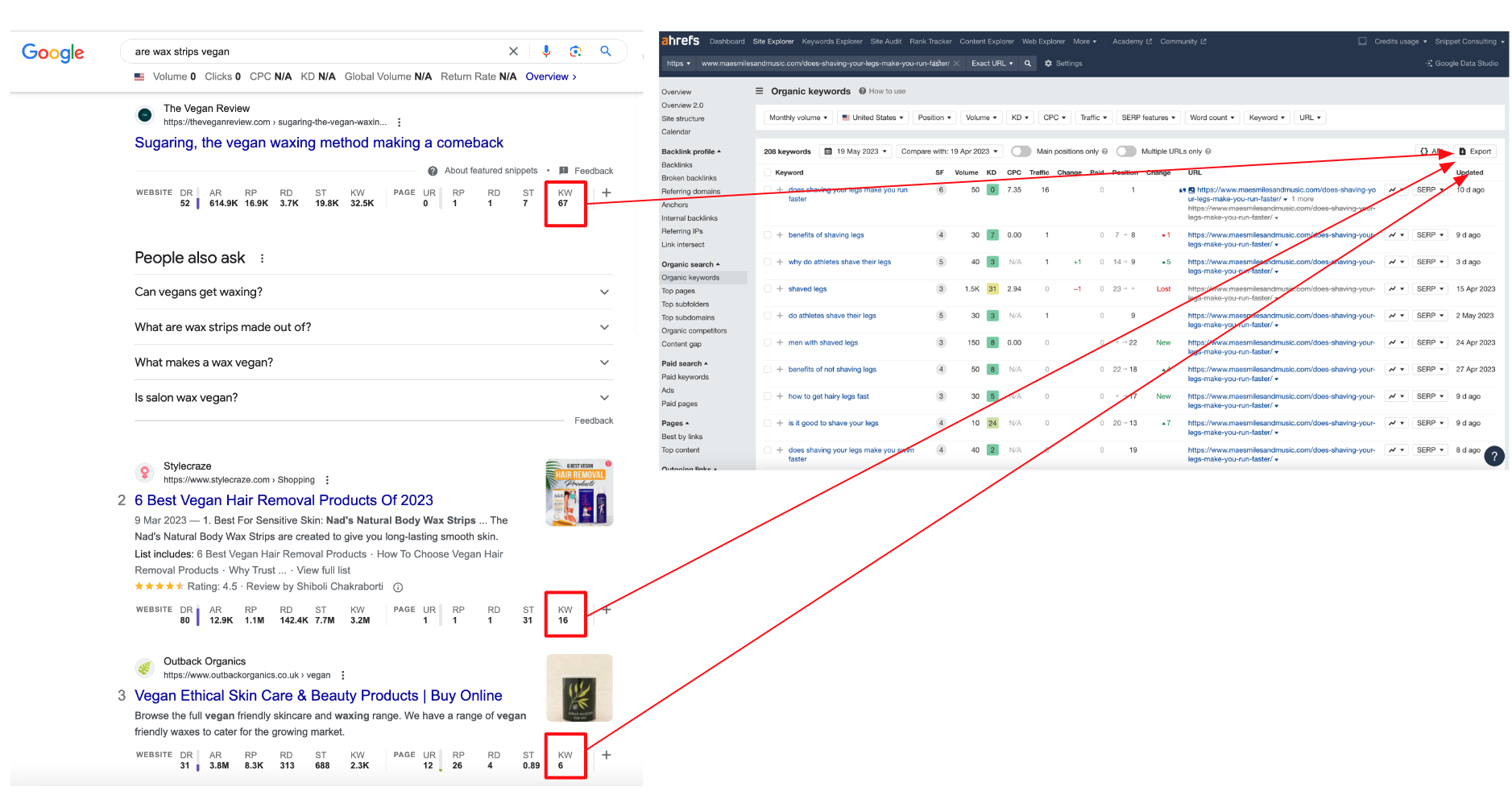

Of course, you don’t need Ahrefs for this; there are other great tools to get the keywords for each URL. I just find the toolbar incredibly useful here.
Step 4: Rinse And Repeat With Each Of Your Content Ideas
You’ll want to enter each of your ideas into Google and get all the keywords for the articles that rank – even if your original query had no search volume.
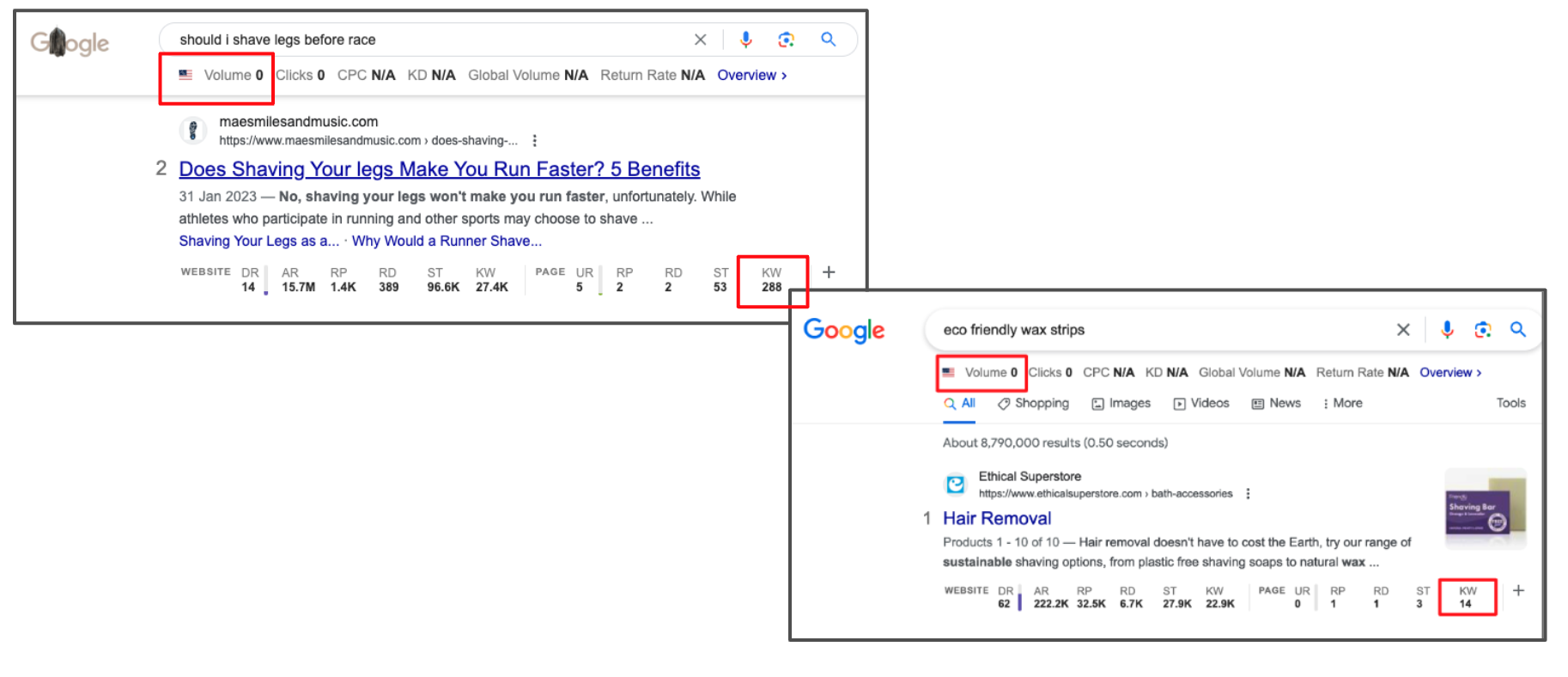

Step 5: Find Additional Keywords None Of Your Competitors Will Have
At this point, you should have a list of keywords that are tangentially related to your target brand.
These keywords correspond to the questions and pain points of your buyer persona, providing a strong foundation for content that’s relevant and engaging for your target audience.
But because you’ve downloaded these keywords from an SEO tools database, your competitors have them, too.
They may not be your direct competitors, but someone has them (otherwise, we wouldn’t have been able to get them from the SEO tool).
So how do we get the keywords no one has? We need to seek additional sources of inspiration.
I generally turn to forums or late UGC sites. Why? Dynamic forums like Reddit and Quora have a huge user base, all of whom are asking questions that many of them can’t find the answers to elsewhere online.
On forums like Reddit, we can zero in on specific topics and subreddits to surface popular questions that get a lot of engagement.
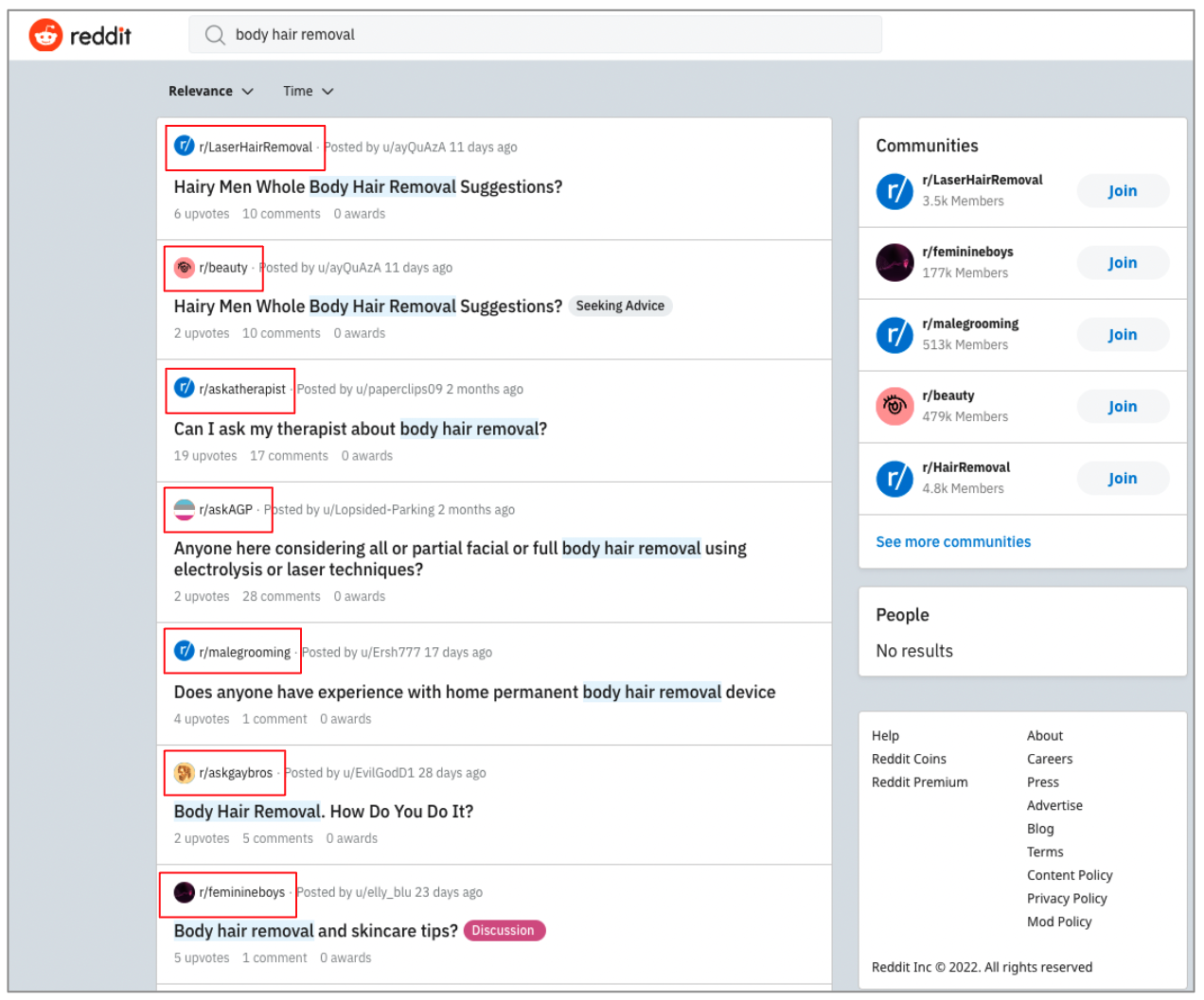 Screenshot from Reddit, May 2023
Screenshot from Reddit, May 2023
Keep in mind that many individuals resort to forums to seek answers to questions that the internet doesn’t readily provide.
On user-generated content (UGC) sites, the same question can be phrased in countless ways, which means conventional keyword tools might not capture this diversity.
Now, if you find a slew of keywords phrased differently but asking the same question, all registering as “zero volume” yet showing substantial engagement (in the form of likes, upvotes, shares, etc.), can we truly label them as zero volume?
I’d argue most certainly not. There’s clearly an active interest and engagement there, and that’s what truly matters.
Back to our hair removal example. There were also thousands of unanswered questions and ideas on Quora.
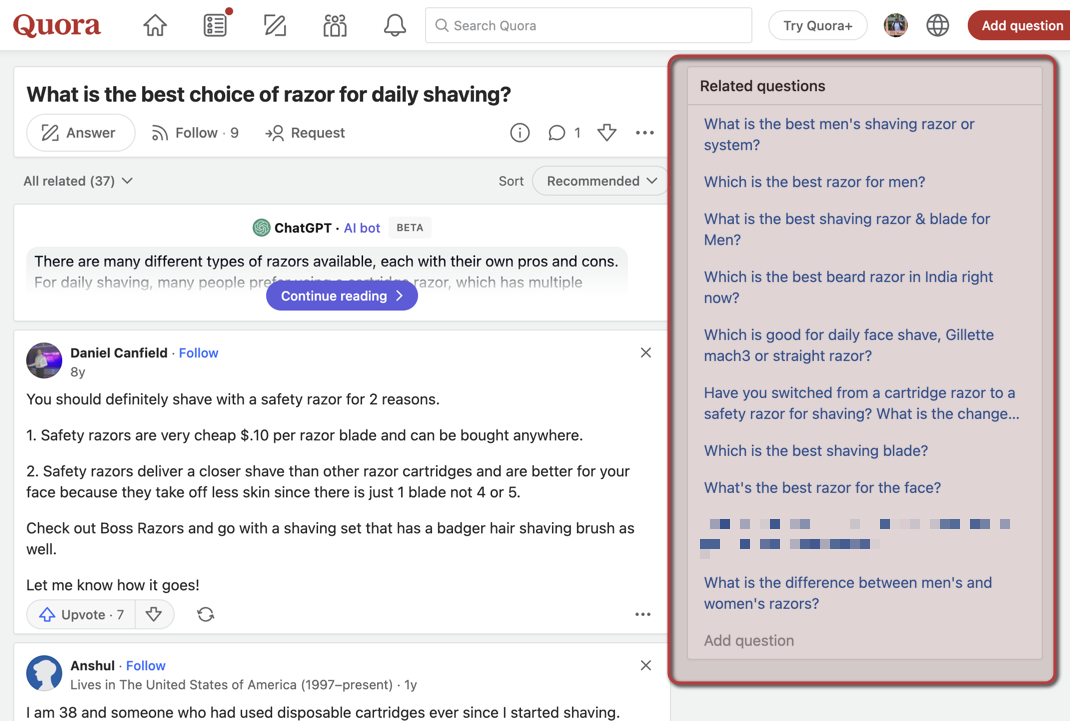 Screenshot from Reddit May 2023
Screenshot from Reddit May 2023
Anyway, we want all these “keywords” too.
The easiest and quickest way is to make a little scraper that searches for keywords and pulls all these. There are plenty of Python libraries for the more “well-known” forums, like this one for Quora and this guide for Reddit.
If you’re not inclined towards coding, don’t have the skills, or perhaps the niche you’re exploring doesn’t readily present good ideas on major forums, there’s a solution for you.
Chrome extensions like Scraper are excellent tools for this. You can simply right-click and use it to scrape all the relevant questions.
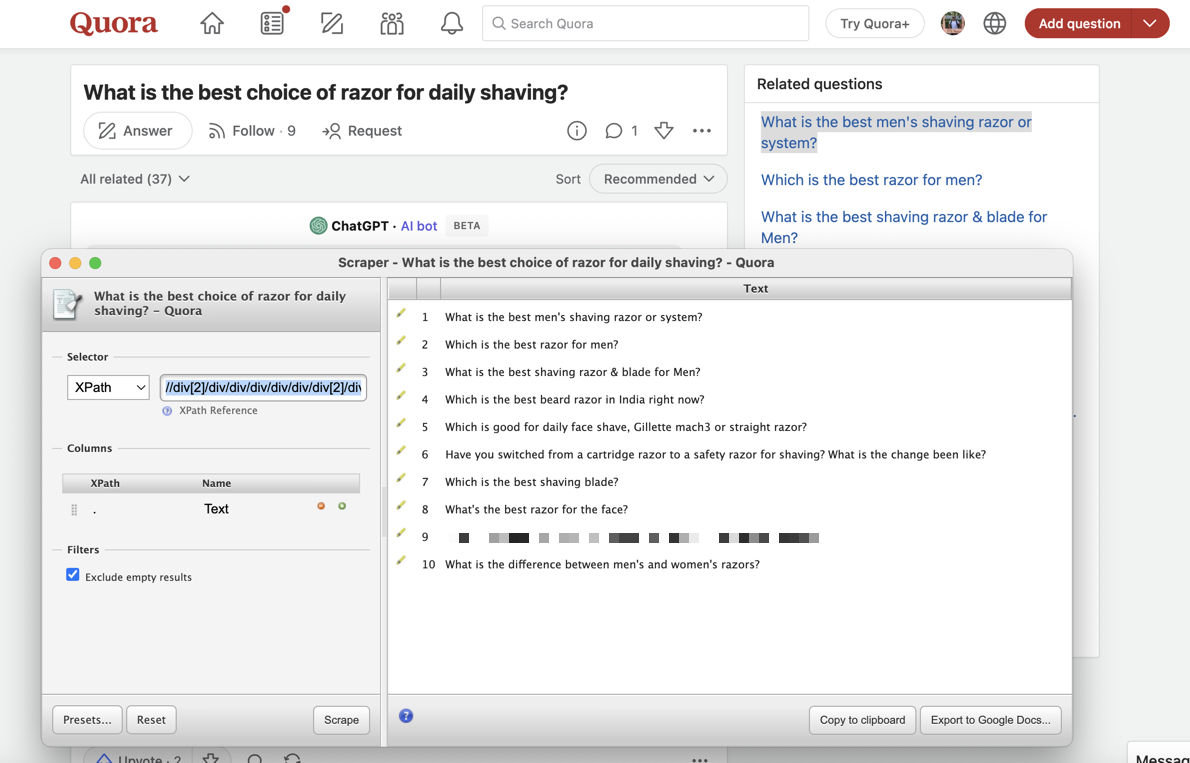 Screenshot from Quora May 2023
Screenshot from Quora May 2023
Step 6 (Optional): Use AI To Make The Questions Less “Chatty”
Of course, when people ask questions on forums, they word them in weird, colloquial ways with misspellings and local abbreviations. We can use ChatGPT here again to make all of our scraped questions “less chatty.”
Use the following prompt to make them more readable:
“Reword the following Reddit questions and reword them into a simple question. Please present the results in a table”
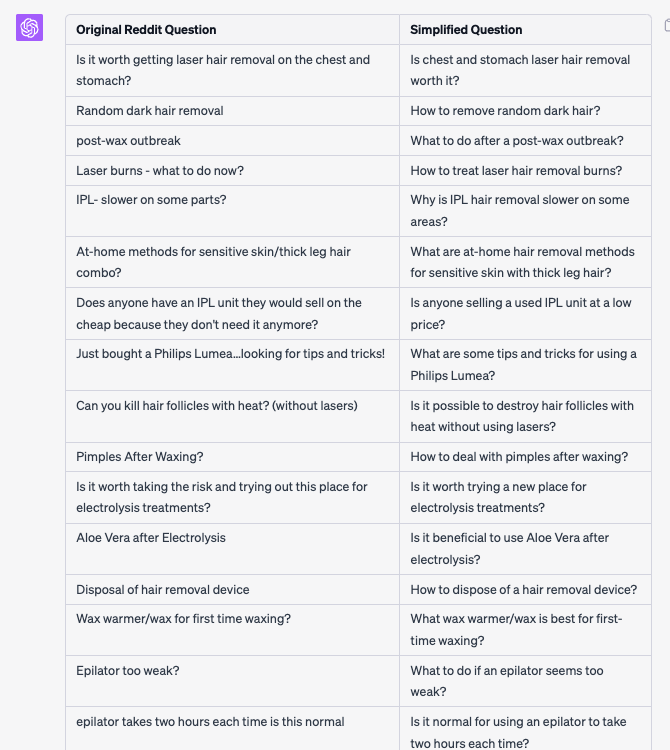 Screenshot from ChatGPT, May 2023
Screenshot from ChatGPT, May 2023
This particular example isn’t the most exciting I’ve ever encountered, as all the questions sort of made sense in their original state without the AI.
Reflecting back again on the time we did this exercise for the condom brand, the quirks were countless. We had a plethora of strange abbreviations and peculiar phrasings, and the AI’s knack for “translating” these into coherent questions was incredibly beneficial.
Step 7 (Optional): Get All The Related Questions, Too
Once I’ve got all my forum questions, normalized or not (this step still works without using AI to make the questions more “sensical”), I like to get all the related questions too.
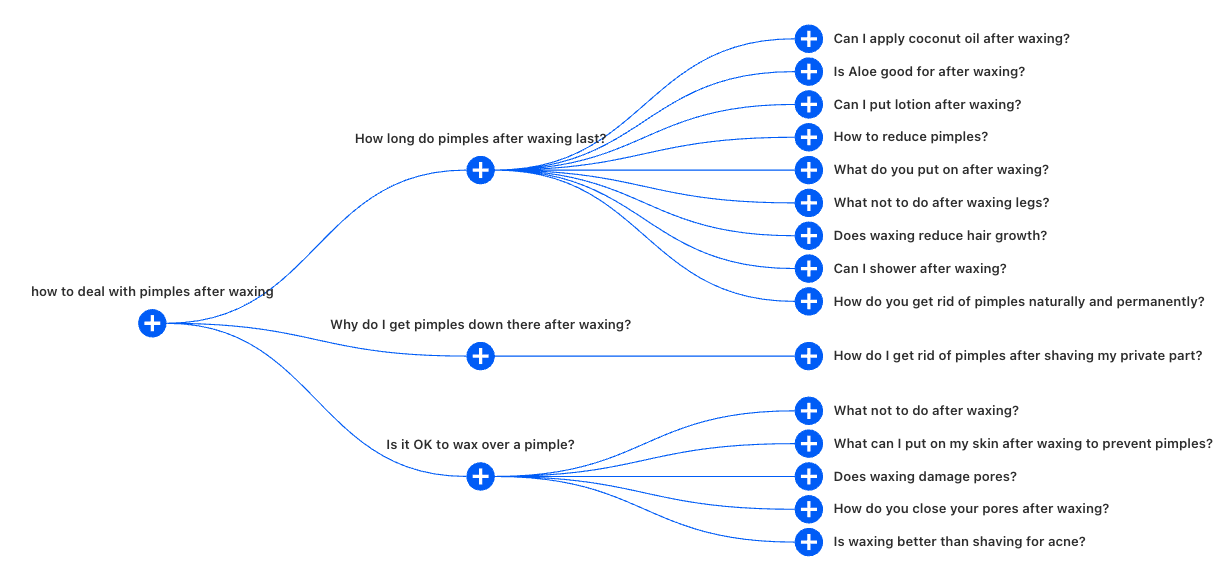 Screenshot from People Also Asked May 2023
Screenshot from People Also Asked May 2023
There are plenty of tools and ways to scrape these for every keyword in your dataset. I personally like to use People Also Asked, as you can bulk upload to it.
Step 8: Get The Search Volumes For All Your New Queries
The keyword data you’ve downloaded from your go-to SEO tools like Ahrefs and Semrush will already include search volumes, so there’s no need to fuss over those.
However, all the fresh queries that you’ve discovered should also be plugged into an SEO tool to check if they hold any search volume.
This batch includes any of the keywords you extracted (and potentially standardized using AI), as well as any related People Also Ask questions that surfaced during your research.
Don’t worry if many of the queries show no volume; in fact, that’s to be expected. As we’ve already touched on, you’ll notice the same question is frequently asked, just worded in a variety of different ways.
Pair that with the fact that many of these questions tend to gather significant engagement on social platforms, and you’ll realize these so-called “zero volume” keywords aren’t truly “zero volume.”
To spot these repeating questions, we need a quick way to group similar queries together.
Step 9: Cluster Your Keywords
Grouping keywords together, or clustering, helps us organize our data. It turns a potentially overwhelming list of keywords into smaller, more manageable groups.
By clustering keywords, we can better understand which pages to create and pinpoint recurring questions within those elusive “zero volume” keywords.
There are many keyword clustering tools out there, but ensure you use one which clusters keywords by the search engine results and not natural language processing.
The former ensures you’re grouping keywords based on how a search engine understands them, not a language model.
Most clustering tools require you to upload a single CSV, meaning you may have to go through and combine all your reports at this stage. If all the columns match up, you could use an online CSV merging tool like this.
Remember to de-duplicate the keywords, too, so that you don’t have double data in there.
If you opt for Keyword Insights as your clustering tool, it offers you the freedom to upload any number of CSVs, regardless of whether the columns align.
The tool will guide you in mapping out the columns. Additionally, it conveniently de-duplicates the keywords for you.
(Disclosure: I am one of the co-founders of Keyword Insights, but there are many other great clustering tools out there).
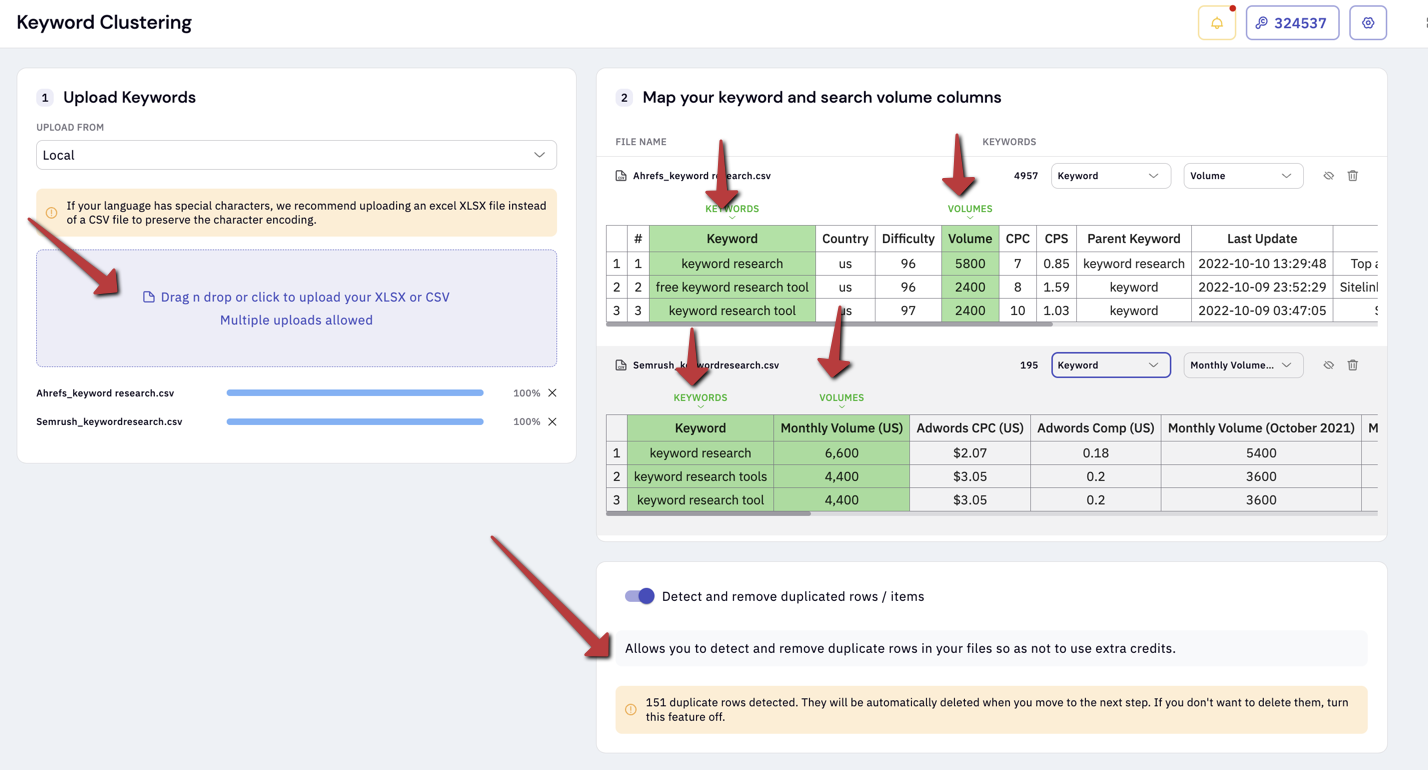 Screenshot from Keyword Insights, May 2023
Screenshot from Keyword Insights, May 2023
Once you have your clustering report ready, you’ll start noticing the trends I mentioned earlier. For instance, observe the number of queries around variations of “Can you recycle razor blades?”
Traditional keyword research might overlook this term because other SEO tools reported it as having only “60 monthly searches.” However, the total sum of all similar questions asked is likely much higher.
Also, keep in mind these “zero volume” queries were selected based on the engagement they garnered (likes, shares, comments, etc.). So, they’re undoubtedly relevant topics to address.
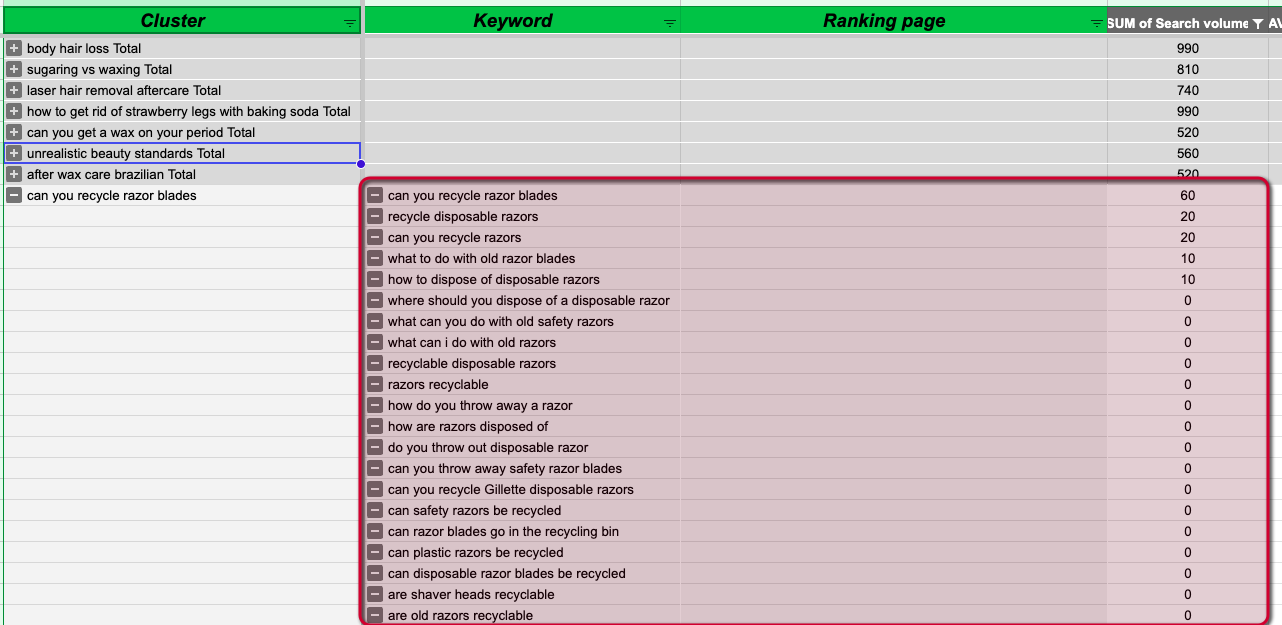 Screenshot from Keyword Insights, May 2023
Screenshot from Keyword Insights, May 2023
Example Insights
After following the above steps for a hypothetical hair removal company, I found myself with a pool of 12,590 keywords, which could be organized into 975 clusters.
Below are some insights we could potentially highlight, confident in the knowledge that it’s likely our competitors haven’t addressed some, if not most, of these topics.
Pre-Purchase
There were many obvious clusters of questions that hadn’t been answered about what potential users were asking before they waxed or around alternative methods of waxing. For example:
 Screenshot from Keywords Insights May 2023
Screenshot from Keywords Insights May 2023
Here’s another example:
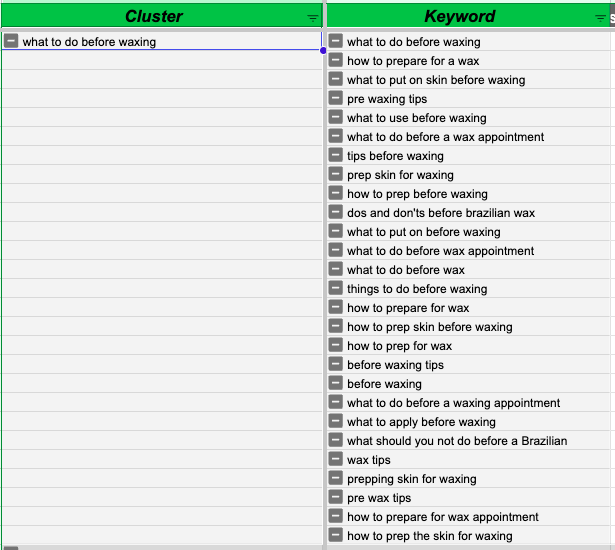 Screenshot from Keyword Insights, May 2023
Screenshot from Keyword Insights, May 2023
Look at how diverse the wording of the same question is. There’s likely a lot more search volume to the query “what to do before waxing” than SEO tools are reporting.
Post-Purchase
It’s quite uncommon to see brands excel in creating “post-purchase” content. “Post-purchase content” refers to valuable materials designed to assist their customers after they’ve already utilized their products (or similar ones).
Creating high-quality post-purchase content is a valuable strategy for any business. It demonstrates a sustained commitment to your customers beyond the point of purchase.
By providing this kind of support, you’re nurturing a relationship that extends beyond the transaction, reinforcing that your brand truly cares about their experience.
Moreover, this approach can potentially decrease the volume of customer service queries as you’re proactively addressing common questions and concerns. This not only streamlines your operations but also enhances the customer’s experience with your brand.
One such large cluster I came across that a hair removal company might wish to cover is this one:
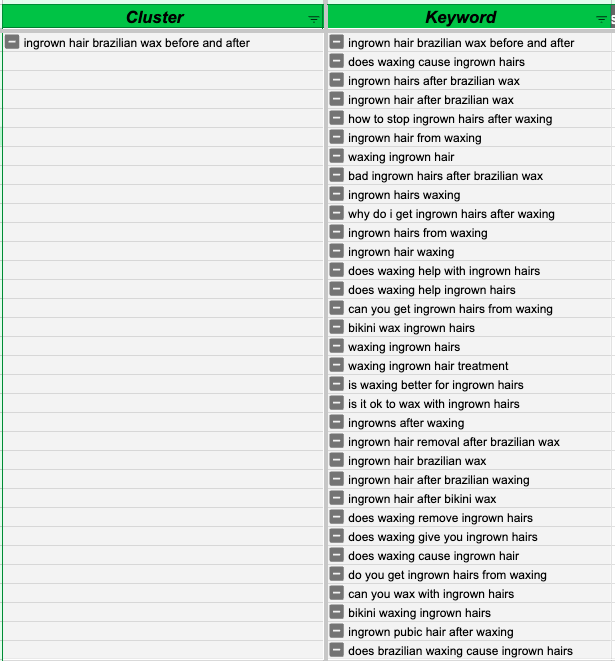 Screenshot from Keyword Insights, May 2023
Screenshot from Keyword Insights, May 2023
Investigating the issue of “ingrown hair after waxing” can bring significant advantages for a hair removal brand.
Let’s explore why.
Firstly, individuals are continuously in search of solutions. The aftermath of waxing isn’t always smooth; dealing with ingrown hairs can be challenging. If your brand can offer relevant and effective advice, it positions you as a trusted expert in the field.
Moreover, consider those online users who are seeking advice for their ingrown hairs. While they may not be actively searching for hair removal products at the moment, if they come across an informative article from your brand, they’ve just made a connection with you.
Essentially, you’ve expanded your reach to prospective customers who were previously unknown.
For your existing customers, providing such value-added content strengthens your relationship. You’re not just a vendor selling them products, but a trusted adviser, enhancing their loyalty to your brand.
From a technical standpoint, producing consistent, quality content increases your visibility to search engines, potentially improving your search rankings. Furthermore, you may gain additional backlinks and social shares, furthering your reach and visibility.
Lastly, offering knowledgeable advice on a topic that is indirectly related to your product underscores your understanding and expertise in the broader field.
You’re not just a product seller; you’re an active participant in the ongoing dialogue, which can enhance your brand’s credibility and influence.
Lifestyle And Advice
The research found a ton of ideas that would resonate with our target audience’s lifestyle needs.
Remember, we’re selling products to real people with real problems. If there’s any content that can help them, even if it’s only “tangentially related” to what we sell, it’s in our best interest to produce it.
Here are some examples:
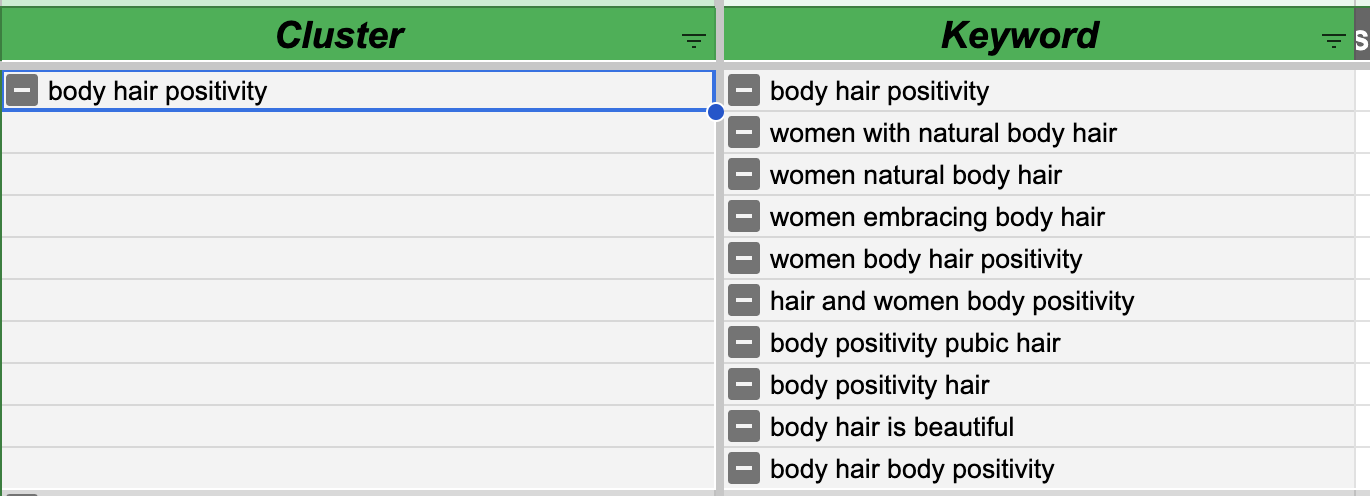 Screenshot from Keyword Insights, May 2023
Screenshot from Keyword Insights, May 2023
Promoting body positivity can offer a strategic advantage for a hair removal brand. From a psychological perspective, it fosters self-acceptance and challenges negative beauty norms, reducing body-related anxiety among consumers. This approach can encourage healthier behaviors, reduce harmful social comparisons, and cultivate resilience against societal pressures, all while promoting inclusivity and a sense of value regardless of physical appearance. The indirect influence on sales could be substantial: by aligning the brand with a cause that resonates with many consumers, it may enhance brand perception and customer loyalty. Consequently, customers may prefer to buy from a brand that genuinely aligns with their values, leading to increased sales and stronger brand loyalty. Nevertheless, the brand’s values must be communicated authentically for the impact to be truly meaningful.
Similar ideas include:
 Screenshot from Keyword Insights, May 2023
Screenshot from Keyword Insights, May 2023
And:
 Screenshot from Keyword Insights, May 2023
Screenshot from Keyword Insights, May 2023
Along with:
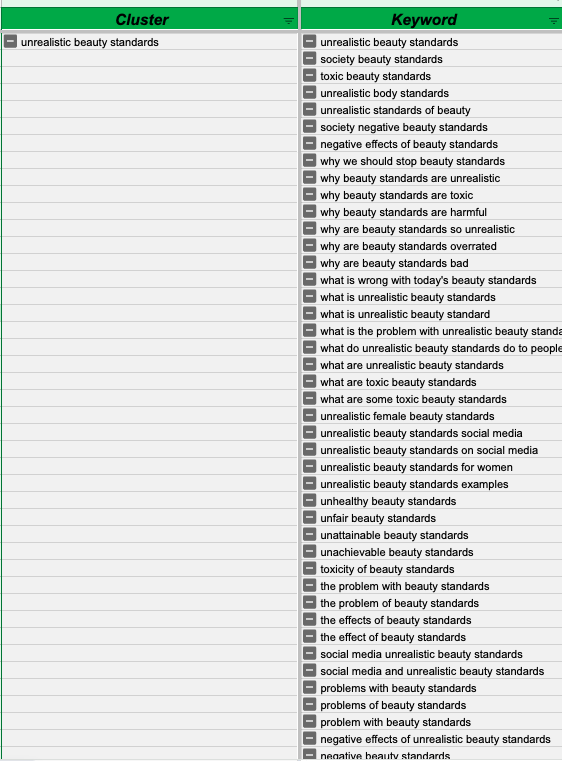 Screenshot from Keyword Insights, May 2023
Screenshot from Keyword Insights, May 2023
By engaging in this broader conversation about attractiveness, the brand can connect more deeply with its audience and demonstrate an understanding of their concerns, thus building trust and strengthening customer relationships.
New Product Ideas
As I mentioned at the beginning, when you explore various topics for your tangential content, it’s more than just collecting ideas for upcoming posts.
You’re actually delving deeper into your customers’ needs and interests that haven’t been addressed yet. This valuable insight can potentially steer the direction for the creation of new products.
We’ve already seen numerous examples of questions people were asking about societal expectations and beauty standards surrounding body hair. It’s natural, therefore, for men to seek out suitable products for addressing these concerns:
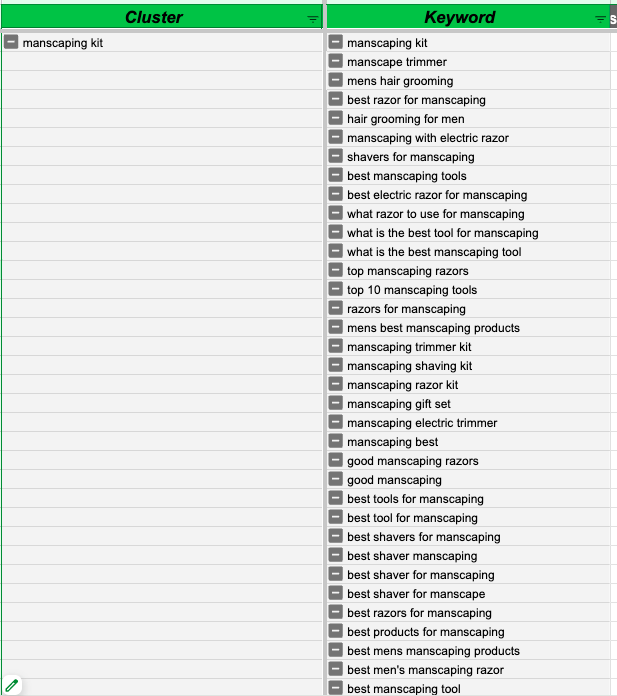 Screenshot from Keyword Insights, May 2023
Screenshot from Keyword Insights, May 2023
Including:
 Screenshot from Keyword Insights, May 2023
Screenshot from Keyword Insights, May 2023
Cast your mind back to the buyer persona we created. One of the key values our person has is being “environmentally friendly.”
It’s great, therefore, that our research has surfaced many potential new product ideas that align with this:
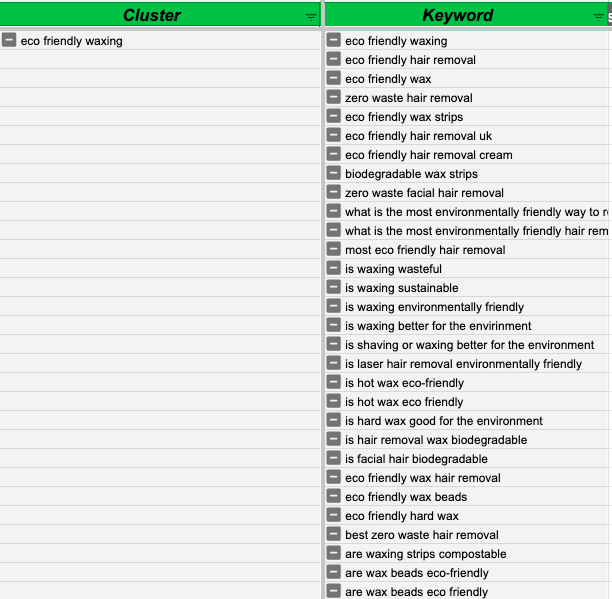 Screenshot from Keyword Insights, May 2023
Screenshot from Keyword Insights, May 2023
Of course, these are just a few samples of what I found. Across the 975 clusters in my research, there were loads of new content and product ideas.
Conclusion
It’s crucial for brands to incorporate tangential keyword research into their strategies in order to stay relevant and connect with a wider audience.
By exploring related topics and keywords, brands can uncover new opportunities, engage diverse audiences, and establish themselves as industry leaders.
Tangential keyword research enables brands to identify emerging trends, understand unique customer needs, and develop innovative content and products that resonate with their target market.
Embracing tangents allows brands to outshine competitors, foster customer loyalty, and achieve long-term success in today’s fast-paced digital landscape.
To discover tangential ideas, follow these steps:
- Understand your target consumer: Put yourself in their shoes and identify the type of content and questions they may have that are tangentially relevant to your business.
- Explore existing content: Check if any content already addresses these concerns. Use your preferred SEO tool to extract ranking keywords by entering relevant URLs.
- Enrich your tangential content ideas: Uncover unique keywords that your competitors may not have discovered. Seek inspiration beyond traditional sources of keyword research on forums or social media platforms where people ask questions that aren’t adequately answered elsewhere online.
- Cluster your keywords: So that you more easily spot patterns and add “volume” to these technically “zero volume” keywords, the keywords need to be grouped together.
- Analyze clusters for trends: Categorize your insights into main categories, such as pre-purchase, post-purchase, new product ideas, lifestyle, and advice. This will help you identify interesting trends and capitalize on them effectively.
In the practical example, we gathered a significant portion of our keyword ideas by scraping Reddit and Quora.
It’s important to note that not all niches can benefit from these channels (for instance, a website selling broadband cables is unlikely to find much insight there).
However, rest assured that there is always a forum or social channel available for every niche; the key lies in discovering it.
Happy keyword hunting.
More resources:
Featured Image: REDPIXEL.PL/Shutterstock
- SEO Powered Content & PR Distribution. Get Amplified Today.
- PlatoData.Network Vertical Generative Ai. Empower Yourself. Access Here.
- PlatoAiStream. Web3 Intelligence. Knowledge Amplified. Access Here.
- PlatoESG. Automotive / EVs, Carbon, CleanTech, Energy, Environment, Solar, Waste Management. Access Here.
- BlockOffsets. Modernizing Environmental Offset Ownership. Access Here.
- Source: https://www.searchenginejournal.com/tangential-seo/487279/



